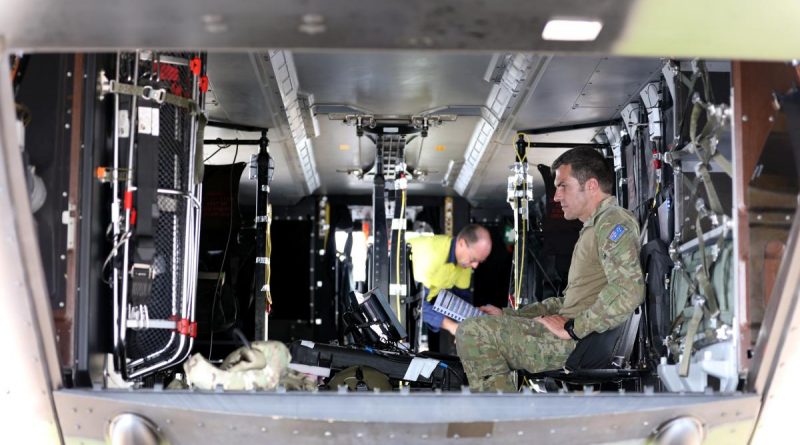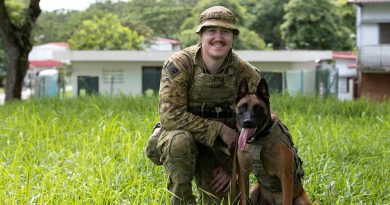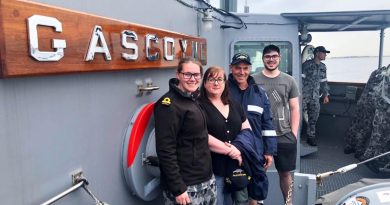Engineers put flight principles to the test

Major Waldo Britz has a job that few in Army know about and far fewer perform.
CAPTION: Major Waldo Britz prepares test equipment on a 5th Aviation Regiment MRH90 Taipan helicopter at RAAF Base Townsville. Story by Lieutenant Akhil Kambil and Captain Carolyn Barnett. Photo by Corporal Lisa Sherman.
He is a flight test engineer (FTE) for the Army aviation test and evaluation section based in Oakey, Queensland.
FTEs are highly skilled engineers qualified in flight test principles and techniques. They also hold a flying currency that allows them to fly the helicopters they work on.
Major Britz said the job presented many technical challenges.
“Any use of the aircraft outside its approved configuration role or environment requires testing,” he said.
“This could include aircraft modifications, new instruments, role equipment or flying techniques.
“It could also be a whole new aircraft being introduced – that is what we test as an FTE.”
The training to become an FTE involves being sent to one of five flight test schools across the world for 12 months, where they learn aircraft flight physics and systems engineering, alongside flight test techniques for aircraft systems, performance and handling qualities.
Major Britz, who joined Army in 2014 as an engineering officer in the Royal Australian Electrical and Mechanical Engineers, said trying to solve problems was his favourite part of the job.
“How do we get the data we’re after?” he said.
“I think the challenges of problem-solving are really satisfying and then when it comes to the conduct of the test, actually flying the aircraft is really good.”
Some tests assess for noise and vibration levels using microphones and vibration sensors.
Other test equipment gathers highly accurate real-time information and post-flight data on mission scenarios.
By understanding these risk factors, Army Aviation can make informed decisions when selecting a system or training aircrew, to ensure aircraft operation is conducted safely.
Major Britz said the job was data-driven and conducted within a busy flying schedule.
“We gather data using instrumentation fitted to different parts of the aircraft depending on what is being tested,” he said.
“Kudos to the regiment; they have fully supported us throughout recent trials.”
.
.

.
.





